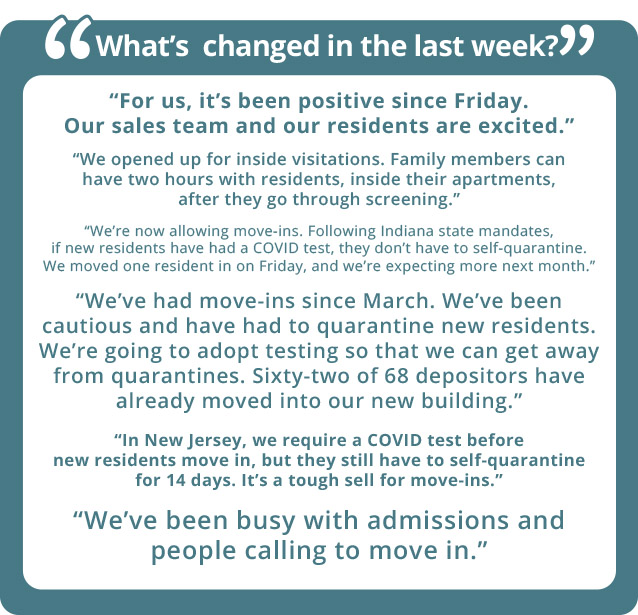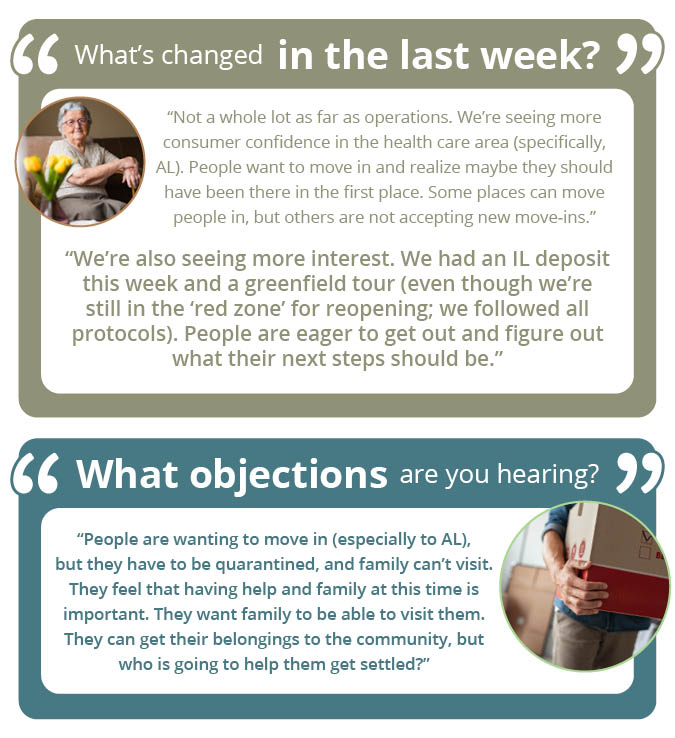Guest post by Mary Muñoz, Senior Managing Director, Ziegler
This is certainly an interesting time for senior living — we’re moving away from COVID-19, although we’re not quite past it yet. The pandemic has taught us a lot about where we’re headed in the future, but there are also a lot of industry trends that have remained constant through it all. Let’s take a look at what’s trending in senior living right now.
Industrywide Growth and Consolidation
What hasn’t changed with COVID-19 is the population wave we have coming, with a surge in the 75- to 85-plus cohort. And with that, we still have many drivers that make our business an attractive one. For starters, there are those still living at home who don’t have anybody there to take care of them during the day. We have the dangers of social isolation among older adults. And there are those who can’t afford caregiving.
In addition, we’re seeing a consolidation trend across the industry. Why is this happening? Almost every transaction we’ve seen has involved a CEO retirement. We’re facing a labor shortage in care and dining, along with a shortage on the C-suite side, as fewer people are coming into the senior living business, although larger organizations have some advantages in recruitment and career path offerings.
Ongoing Labor Market Challenges
Speaking of which, let’s talk about the labor market a bit. The U.S. Bureau of Labor Statistics is projecting almost 1.2 million annual job openings in senior living. Worldwide, we’ve already crossed the line in the past couple of years that there are fewer people under 5 than there are those 65 and older.* That means we literally won’t have the bodies to do things the way we’ve done in the past. So, we have to find ways to reinvent how work is getting done in our communities.
The pressures are coming from many different directions. We’ve got financial struggles, and the changing demographics of who’s coming into the workforce. Government reimbursement is under pressure, which in turn affects health care worker wages. The pandemic caused clients to lose employees because they refused to be vaccinated or simply burned out. Immigration was disrupted and a lot of the caregivers we get from across the border were affected. And then we have the lasting issue that senior services isn’t exactly a sexy line of work.
Stressors in Skilled Nursing
For post-acute care, I want to highlight the compounding challenges in the skilled nursing environment. COVID-19 definitely exhausted and burned out employees. There’s also the need for private rooms, which many communities did not offer pre-COVID. And a lot of the nursing communities are old, with declining occupancy, in part because we didn’t have assisted living and memory care until recent years. So, there were some people who didn’t need to be there and could be taken care of in a less acute setting.
All of these factors are leading to a downsizing of skilled nursing, and in some cases the transition of skilled nursing rooms to high-acuity assisted living. In fact, we’ve counted 35 Life Plan Communities around the country that have eliminated skilled nursing from their continuums in favor of high-acuity assisted living.** And there are many new communities being built right now that have no skilled nursing.
Technology as a Partner for Smarter Aging
There are many developing technologies that serve seniors in various ways. We’ve certainly had a dramatic rise in telehealth during the pandemic. Beyond that and electronic medical records — which most already have in place — there are resident engagement technologies, including dining reservations, menus and activities. There’s also been a focus on predictive technology, not only tracking footsteps but also predicting falls by tracking gait. That’s in addition to cognitive brain solutions, smart home technology and even robots. While robots probably won’t cure the labor shortage, we have seen communities using robots to deliver plated meals and bus plates in dining venues, for example.
These four takeaways are just the beginning of what’s trending as we emerge from the pandemic. For more information, feel free to subscribe to the Ziegler e-newsletter, refer to our white paper about health care technology or message me at mmunoz@ziegler.com.
*Source: U.S. Census Bureau, Percentage of World Population Under Age 5 and Aged 65 and Over: 1950-2050
**Source: Ziegler Investment Banking




